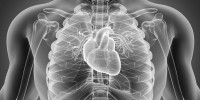
The Mechanisms of Cardiac Fibrosis
Cardiac fibrosis is an accumulation of extracellular matrix within the heart. This accumulation greatly increases the risk of heart failure, which resulted in 18.6 million deaths worldwide in 2019. There are two types of cardiac fibrosis: replacement fibrosis, which occurs to repair tissue after cardiomyocyte death, and reactive fibrosis, which occurs between cells and around vasculature. These two types of fibrosis often occur simultaneously in remodeled hearts, impairing function and leading to further maladaptive remodeling in a positive feedback loop.
Consequences and symptoms of cardiac fibrosis
Cardiac fibrosis is not only a major contributor to heart failure, it is also implicated in several cardiovascular diseases, including cardiomyopathies, arrhythmias, valvular heart disease and infarcts. It may also be associated with other diseases such as diabetes, chronic kidney disease and infections. Cardiac fibrosis impairs myocardial function and promotes maladaptive remodeling, resulting in a positive feedback loop that impedes fibrosis regression.
Currently, there are few effective therapies for cardiac fibrosis, and we need better understanding and targeted treatments. Now, a recently published review provides an overview of the complexity of cardiac fibrosis and therapeutic strategies, highlighting gaps in knowledge and opportunities for further investigation. Here, the authors focus on the regulation and complexity of fibrotic responses in both fibrosis types through factors such as protein expression, fibroblast heterogeneity, microenvironmental signaling, and intracellular regulation. The value of integrating „omics“ technologies is also discussed, as well as emerging regulatory mechanisms, therapeutic approaches, and knowledge gaps in the field.
New opportunities and new knowledge through omics technologies
 As key drivers of ECM synthesis and remodelling, defining fibroblast phenotypic variation and regulation is essential to better understand fibrogenesis and identify therapeutic targets. Cardiac fibroblasts stem from epicardial (80%) and endothelial (20%) origins, and significant insights into their heterogeneity and the drivers of these sublineages have been made through single-cell transcriptomic (scRNA), single nuclei transcriptomic and single-cell assay for transposase accessible chromatin (scATAC-seq) technologies.
As key drivers of ECM synthesis and remodelling, defining fibroblast phenotypic variation and regulation is essential to better understand fibrogenesis and identify therapeutic targets. Cardiac fibroblasts stem from epicardial (80%) and endothelial (20%) origins, and significant insights into their heterogeneity and the drivers of these sublineages have been made through single-cell transcriptomic (scRNA), single nuclei transcriptomic and single-cell assay for transposase accessible chromatin (scATAC-seq) technologies.
The researchers demonstrate: Single-cell sequencing and quantitative proteomics have provided new insights into the mechanisms of cardiac fibrosis. These include reparative or maladaptive processes, spatiotemporal changes, and fibroblast heterogeneity. Microenvironmental and intercellular signaling mechanisms and intracellular regulators, including post-translational/epigenetic modifications, RNA binding proteins, and non-coding RNAs, have also been identified. On the one hand, targeting cellular heterogeneity, microenvironmental signaling, and intracellular regulation offer promising therapeutic leads. On the other hand, further advances in understanding the molecular basis of fibrotic remodeling are needed for clinical development.
We believe: Deep insights through omics technologies such aus single cell omics, transcriptomics and epigenomics help us to better understand complex processes in the human body and difficult disease patterns. We are grateful for every study and every overview – every insight counts!